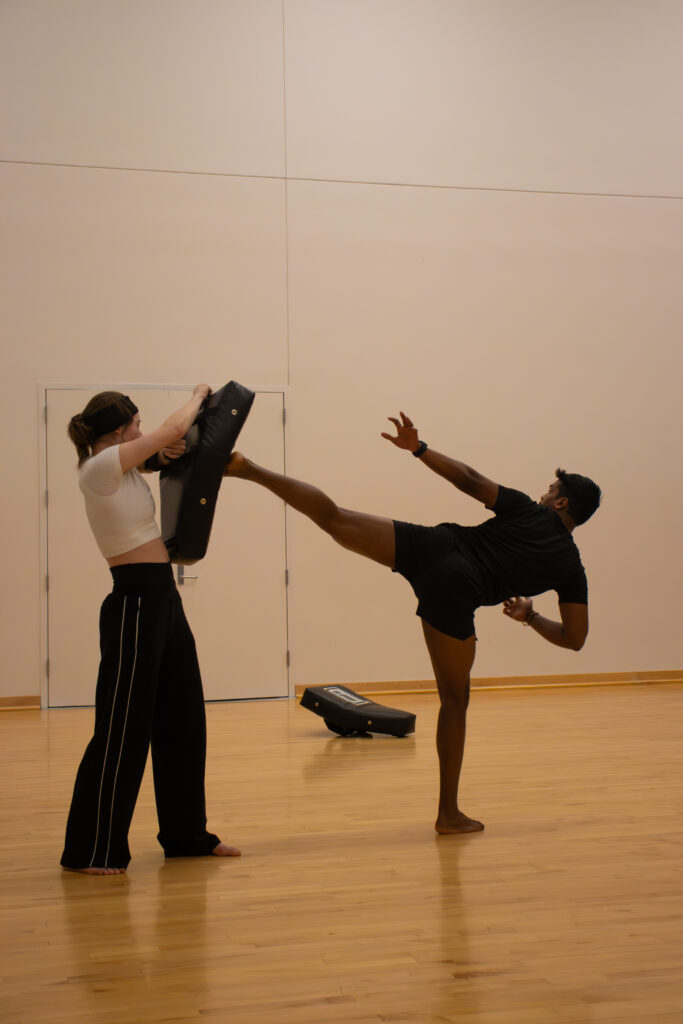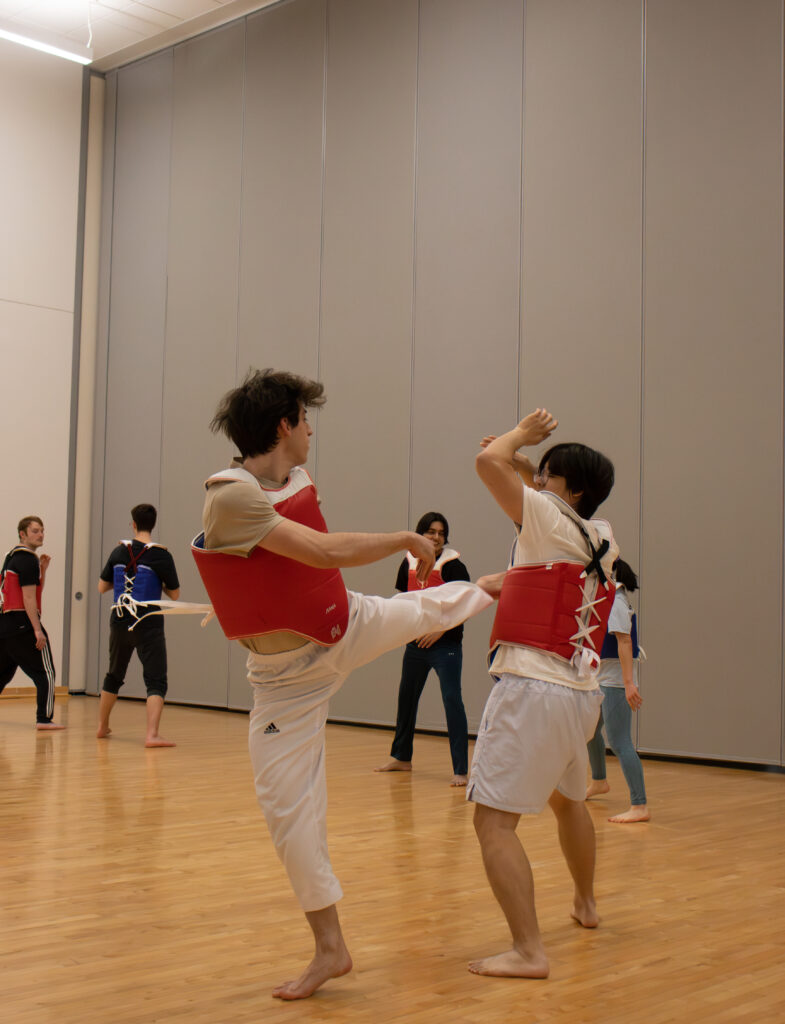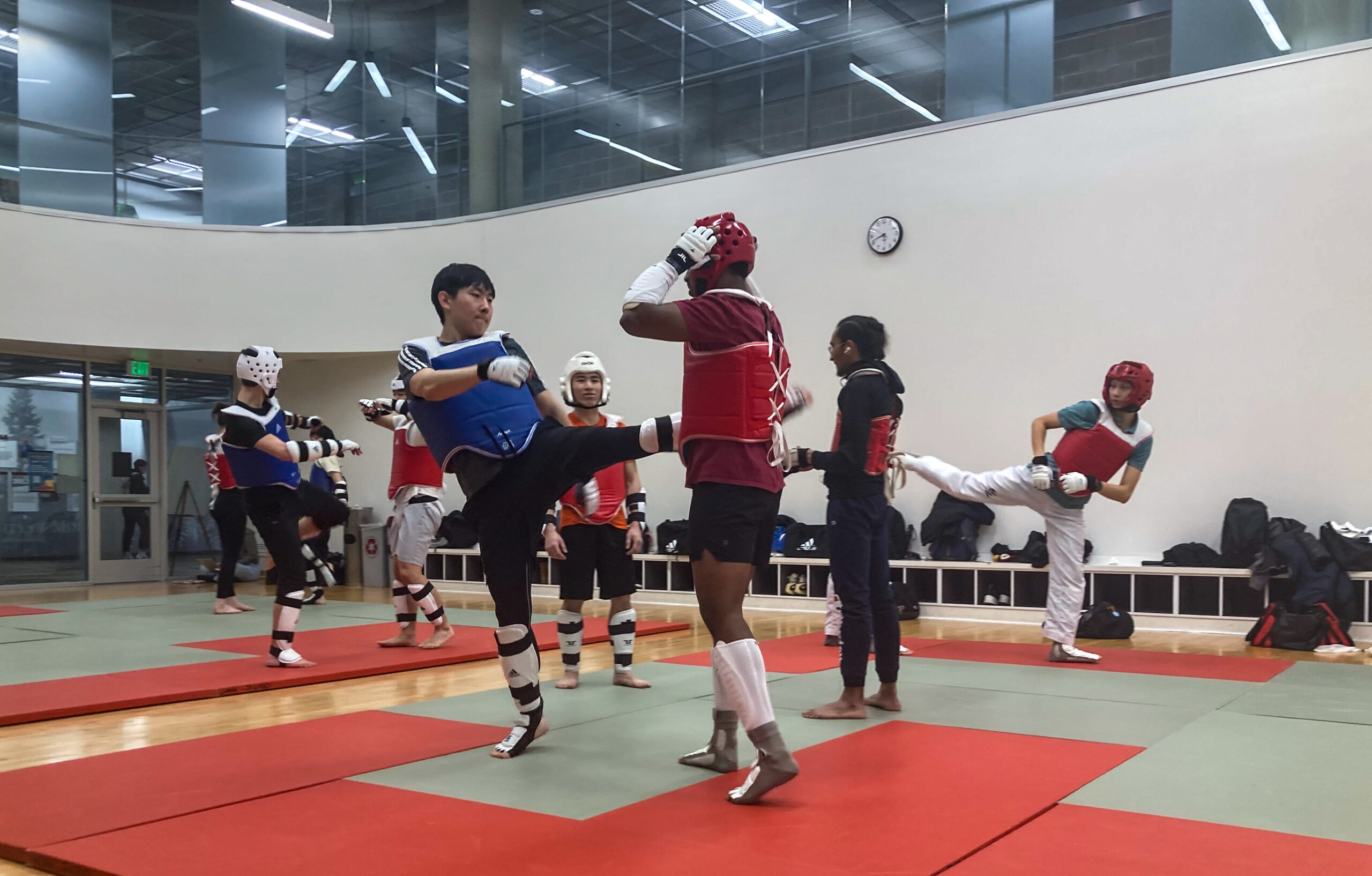By: Maya Bell
Kicking, punching and brandishing weapons at each other is not how most people build a sense of community. But for many members of the University of Minnesota’s Taekwondo Club, finding where – and with whom – you belong is equally important to the physical challenge of martial arts.
There is plenty of sweaty warm-up exercise for members of the intramural club when they gather on Mondays, Wednesdays and Fridays in a corner room at Rec-Well. You’ll hear the thud of blows hitting pads. On a recent Wednesday, members worked together to put on bright red and blue sparring gear, before gathering on two green mats as club president Sakthi Sundaram Saravanan went over the plan for the evening.

Taekwondo, which translates to “the way of the foot and hand,” is a Korean martial art that became popular in the U.S. after the Korean War. According to Asian Matters for America, there are 7 million practitioners of Taekwondo in the U.S.
“I try to create a challenge for every single taekwondo person, regardless of where they are in their career in Taekwondo,” Saravanan said.
Usually, the club has at least 10-20 members at practice, ranging from freshmen to seniors. On Mondays, Taekwondo focuses on “Poomsae,” a sequence of defense and attack moves and conditioning for leg strength so group members can improve their kicks, which Saravanan says is the most difficult practice.
“You have to be very precise with your movements. You have to be gentle yet forceful with your moves when you do Poomsae, and that’s a big challenge for a lot of people,” Saravanan said.
Wednesdays are for sparring sessions. Friday is given over to training with traditional weapons like nunchucks, and flat swords and the staff.
The club participates in collegiate competitions and performs for student associations, such as the Asian Student Association and the Korean Student Association.
Even with the physical training, the martial arts give the Taekwondo Club a sense of community.
“I’ve been able to meet a lot of good people who all share the same sort of interest and passion that I have for Taekwondo, but also people that I feel comfortable around that I can be myself,” said James Cho, the vice president of the club.
Cho originally joined the club as a beginner during his freshman year. Taekwondo was something he always wanted to do, but his parents would not allow it.

“My parents didn’t let me because they were like, ‘You’re gonna hurt yourself, you’re not athletic enough.’ I saw the club, and I was like, you know, I’m in college, why not?” Cho said. “So I showed up at the first practice and I just really liked the vibe.”
He practiced Taekwondo on and off by watching internet videos and from friends during elementary school. He kept coming back due to the sense of community and the friendships he’s made.
While the club doesn’t have the belt system, he said he’s at least at a first-degree black belt in experience.
“I feel like I’ve become more comfortable moving in my own body, as in like when I move, I don’t feel as slow,” Cho said. I feel more comfortable. I feel I can go faster. I can now jump higher.”
After three years of training and fighting, he learned a lot from taekwondo beyond kicking and punching. One important lesson is that building a sense of community doesn’t come from thin air, it takes a lot of work.
“Being the vice president for the past two years, I’ve had to do a lot of things like organizing, trying to get meetings done,” Cho said. “It’s a lot of work, but after so many years of doing it, I started to get a sense of how to effectively do it so that everybody basically doesn’t exclude anyone.”

One of the new members, James Bode, said he appreciates that approach.
Bode did Taekwondo during high school in a much more disciplined and rigid system.
“I’d say the community is awesome. It’s not like when I did Taekwondo, it was with a formal master. It was very regimented. This is laid-back, casual. They don’t have to compete. They can be there for hanging out and sparring,” Bode said.
Each of the club members has a different goal they want to achieve. Cho hopes the club gets more funding from the university to pay for training equipment and competitions.
Bode wants to use the club to help him enjoy his senior year and maybe branch out after college.
“Being a senior, I think it’s less about trying to set some high bar for myself. It’s more so to have an outlet to socialize and exercise and then get back into Taekwondo and probably carry it on after undergrad,” Bode said.
Even as the clock ticked down to the end of this Wednesday’s session, some members still wanted to spar, including Bode. For the final matchups of the night, Bode and Cho sparred against each other.
As they finally stopped, Bode, panting on the floor, gave Cho a fist bump.
“Good match,” Bode said.
